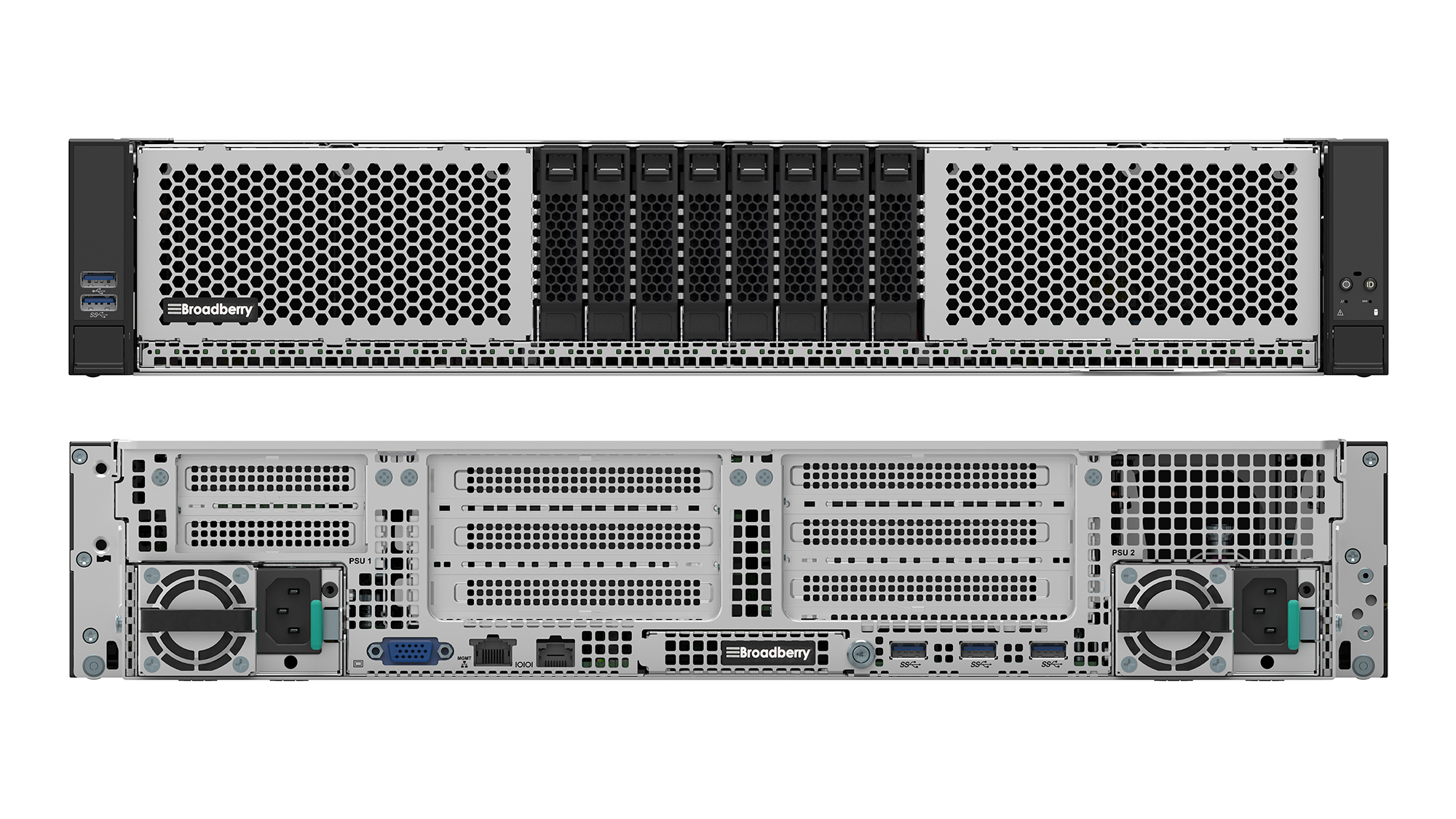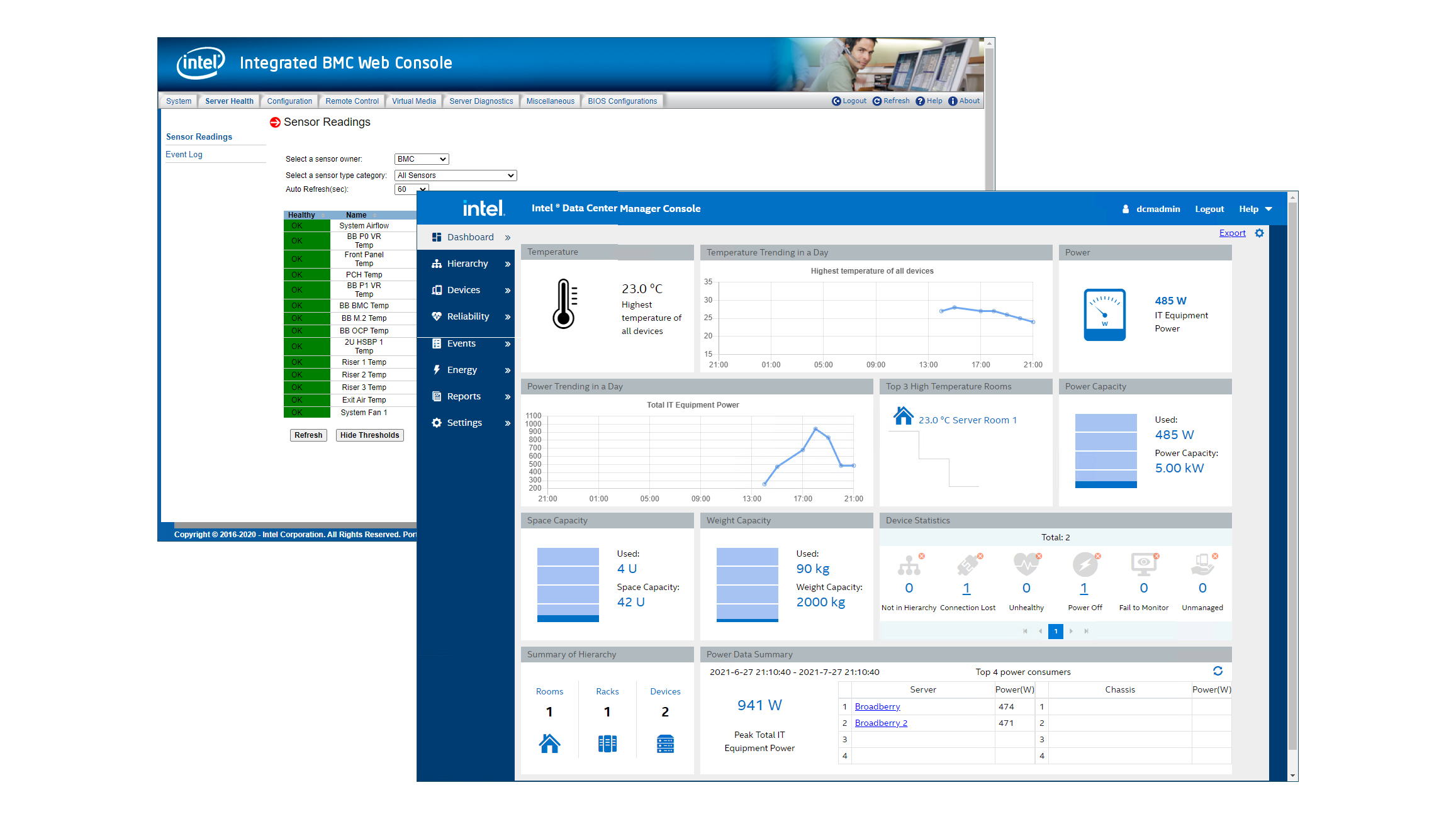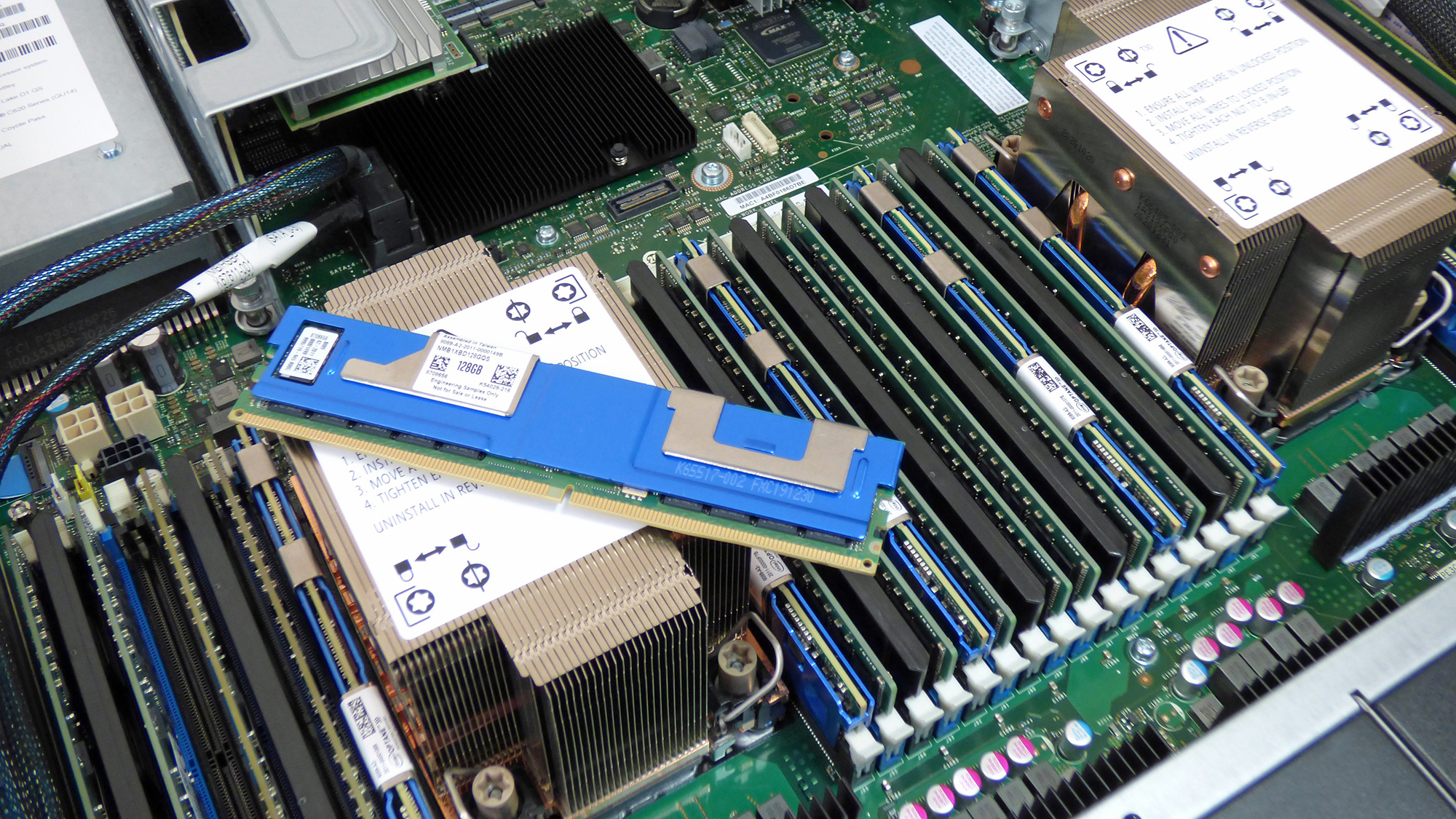Broadberry CyberServe SP2 208-8I G3 review: Optane a-gogo
A mighty server package for the price with a big helping of blisteringly fast Intel Optane 200 PMEMs


-
+
Top value
-
+
Gen3 Xeon Scalable CPUs
-
+
Optane 200 PMEMs
-
+
Monstrous memory capacity
-
+
High PCI-E 4 expansion potential
-
+
100GbE-ready
-
-
No RAID included

Intel has suffered some bruises over the last few years, thanks to increasing competition from its main rival in the CPU market. The company is intent on taking the fight to AMD, however, and to that end, it has now partnered its ‘Ice Lake’ Gen 3 Xeon Scalable CPUs with a refresh of its Server System platforms. The new ‘Coyote Pass’ family offers a choice of 1U, 2U and modular systems, and Broadberry’s CyberServe SP2 208-8I G3 showcases Intel’s Server System M50CYP2UR208.
This general-purpose workhorse may look unassuming but its 2U chassis is crammed with a remarkable specification offered at a very tempting price. Along with a tasty pair of 36-core Intel Xeon Scalable Platinum 8360Y CPUs, it includes a generous 512GB of 3,200MHz DDR4 memory and partners this with eight 128GB Intel Optane Persistent Memory (PMEM) 200 modules.
Five 960GB Intel D3-S4610 SATA SSDs get you out of the storage starting blocks, the 8-bay backplane also supports NVMe SSDs and the chassis can be easily upgraded to provide a total of 26 SFF devices. Broadberry has also fitted an additional dual-port 10GbE mezzanine card in the server’s rear OCP 3 slot, while speed freaks will appreciate the inclusion of not one, but two Intel dual-port QSFP28 E810-C-Q2 100GbE PCI-E 4 network adapter cards.
Broadberry CyberServe SP2 208-8I G3 review: Design
The chassis is solidly built and for internal design, Intel takes the same tack as Dell EMC’s latest PowerEdge servers, with a T-shaped M50CYP2SBSTD motherboard which allows the PSUs to be placed on each side of the chassis. This improves air flow through the chassis so there are no hot spots and it allows the chassis to support CPUs with TDPs of up to 270W – meaning most of the Gen3 Xeon Scalable family.
Storage features are extensive; our review system was fitted with one 8-drive ‘combo’ backplane that supports SATA and NVMe devices. SAS is on its agenda too, but you’ll need to add an interposer accessory board behind the backplane and plug an Intel RAID card on top of it.

Two more eight-drive backplanes can be added to bring the drive count up to 24 while an optional two-bay cage fits on top of the left PSU housing although thermal restrictions only allow SATA SSDs to be installed in it. The motherboard also has a pair of onboard M.2 SATA SSD slots which can provide mirrored storage dedicated to running an OS.
Expansion potential is excellent as even with the two 100GbE cards in residence, the server still has six free PCI-E 4 slots. The OCP 3.0 Gen 4 slot supports industry-standard mezzanine cards and cleverly, these can be inserted and removed from the rear without having to pull the server out of the rack.
Broadberry CyberServe SP2 208-8I G3 review: Optane options and performance
Only Intel Optane PMEM 200 modules are supported but one for every memory channel can be installed so with dual CPUs, you can drop in up to 16. The modules can be configured directly from the server’s BIOS setup menu or Intel’s open source IPMCTL utility for Windows and Linux. Either way, you set your goal and choose between Memory Mode, App Direct or a mixture of both where you can set percentages for each mode.
For testing, we created two interleaved App Direct regions each using four Optane modules so they were spread equally across the memory channels on both CPUs. From the Windows Server 2019 Server Manager app, we could see both regions available as 504GB persistent memory disks which we teamed up with four of the SATA SSDs to create a single Storage Space.
We used Iometer set to 256KB blocks to test raw throughput and 4KB blocks for IOPS. Performance is staggering: the Optane regions cached our 100GB Iometer test file and returned raw sequential read and write rates of 333Gbits/sec and 31Gbits/sec. Random performance was equally impressive with Iometer reporting read and write rates of 285Gbits/sec and 13Gbits/sec.

The good news continued for throughput numbers, with Iometer recording sequential read and write rates of 1,167,800 IOPS and 784,080 IOPS. Swapping over to random operations saw speeds of 1,163,430 IOPS and 190,850 IOPS. We also ran the CrystalDiskMark app on the Storage Space and although there were some variations, it generally agreed with our Iometer results.
Broadberry CyberServe SP2 208-8I G3 review: Server management
The server’s embedded BMC controller may not be able to match Dell EMC and HPE for remote management features, but it is capable of providing plenty of information about server operations. From its web interface, we could view general system information, browse details of the server’s 101 sensors, set sensor thresholds and link them to SNMP and email alerts.
Whereas Dell EMC and HPE expect you to pay extra, Intel includes remote control and virtual media services as standard. The embedded Node Manager also allowed us to link the server up with Intel’s Data Center Manager (DCM) app which we run in the lab on a Windows Server 2019 host.
DCM provides a central web console for server monitoring where its customisable dashboard provides an overview of total data centre power usage and trends, temperatures and rack capacities. You can drill down and view details of individual servers, control power, apply capping policies and use the advanced power model feature to predict future power usage.
Broadberry CyberServe SP2 208-8I G3 review: Verdict
Broadberry’s CyberServe SP2 208-8I G3 is offering a magnificent hardware package at a price the blue chips won’t stand a chance of matching. With Gen3 Xeon Scalable Platinum CPUs at the helm, this 2U rack server is up to any workload challenge and it comes 100GbE-ready with plenty of room for more expansion.
The Optane 200 PMEMs add extra levels of versatility and our tests in App Direct mode showed they are capable of delivering a massive boost to storage performance. The CyberServe is also well suited to virtualization duties as swapping the PMEMs to Memory Mode will deliver a big boost in memory capacity at a cost that’s far less than equivalent DDR4 modules.
Broadberry CyberServe SP2 208-8I G3 specifications (as reviewed)
| Chassis | Intel Server System M50CYP2UR208 |
| Motherboard | Intel M50CYP2SBSTD |
| CPU | 2 x 36-core Intel Xeon Scalable Platinum 8360Y |
| Memory | 512GB 3,200MHz DDR4, 8 x 128GB Intel Optane 200 PMEMs (max total 12TB) |
| Storage bays | 8 x SAS/SATA/NVMe SFF (max 26), 2 x internal M.2 SATA |
| RAID | None included |
| Storage included | 5 x 960GB Intel D3-S4610 SATA SSDs |
| Network | Dual-port Intel 10GbE OCP 3, 2 x dual-port Intel E810-C-Q2 100GbE PCI-E 4 |
| Expansion | 8 x PCI-E 4 slots, 1 x OCP 3.0 slot |
| Power | 2 x 2,100W Platinum hot-plug PSUs |
| Management | Intel BMC with Gigabit, Intel DCM |
| Warranty | 3Yrs On-Site NBD |
Get the ITPro daily newsletter
Sign up today and you will receive a free copy of our Future Focus 2025 report - the leading guidance on AI, cybersecurity and other IT challenges as per 700+ senior executives
Dave is an IT consultant and freelance journalist specialising in hands-on reviews of computer networking products covering all market sectors from small businesses to enterprises. Founder of Binary Testing Ltd – the UK’s premier independent network testing laboratory - Dave has over 45 years of experience in the IT industry.
Dave has produced many thousands of in-depth business networking product reviews from his lab which have been reproduced globally. Writing for ITPro and its sister title, PC Pro, he covers all areas of business IT infrastructure, including servers, storage, network security, data protection, cloud, infrastructure and services.
-
 Third time lucky? Microsoft finally begins roll-out of controversial Recall feature
Third time lucky? Microsoft finally begins roll-out of controversial Recall featureNews The Windows Recall feature has been plagued by setbacks and backlash from security professionals
By Emma Woollacott Published
-
 The UK government wants quantum technology out of the lab and in the hands of enterprises
The UK government wants quantum technology out of the lab and in the hands of enterprisesNews The UK government has unveiled plans to invest £121 million in quantum computing projects in an effort to drive real-world applications and adoption rates.
By Emma Woollacott Published
-
 Businesses are taking their eye off the ball with vulnerability patching
Businesses are taking their eye off the ball with vulnerability patchingNews Security leaders are overconfident in their organization’s security posture while allowing vulnerability patching to fall by the wayside.
By Jane McCallion Published